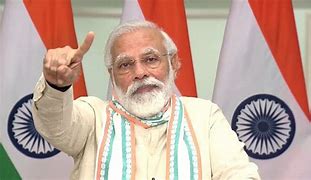Feature
India cheers as Paris delivers ‘historic’ climate accord

Paris: Amid cheers, hugs and tears of joy, delegates from 196 countries at the climate change conference here adopted late on Saturday the first universal pact committing them to curb global warming to well below 2 degrees Celsius and outline a roadmap to raise $100 billion annually towards a green fund for developing nations.
India immediately welcomed the pact, saying it was balanced and addressed most of its concerns.
The Paris Agreement — as the 32-page accord is called and reached after two weeks of hectic talks, a day’s extension and and some sleepless night for negotiators — was declared adopted after French Foreign Minister Laurent Fabius, also the chair of the conference, struck the gavel.
“You’ve done it — reached an ambitious agreement, a bindin g agreement, a universal agreement. Never will I be able to express more gratitude to a conference. You can be proud that to stand before your children and grandchildren,” said French President Francois Hollande.
India’s Environment and Foreign Minister Prakash Javadekar felt the pact could have been more ambitious as the commitment from rich nations was “much below” what was expected of them, but felt the basic concept of common but differentiated responsibilities towards environment protecting was largely addressed.
“To achieve big things as there are languages and many issues, when 196 countries are putting their efforts together. One needs to be accommodative without changing the thrust of the agreement. We’ve done everything to maintain that thrust,” Javadekar said.
“Today is a historic day. What we have adopted today is not only an agreement but a new chapter of hope in the lives of seven billion people,” he said at the closing plenary, adding: “Today we reassure our future generation that we all will mitigate the challenge posed by climate change and give them a better future.”
Earlier in the day President Hollande had called up Prime Minister Narendra Modi for his support.
Following the adoption of the Paris Agreement by the 21st Conference of Parties, under the aegis of the UN Framework Convention on Climate Change, it will be taken to the UN headquarters. Then on Earth Day, falling on April 22, 2016, it will be opened for the signatures of members for one year.
It will enter into force once 55 countries accounting for at least 55 percent of emissions ink it.
“For the first time, every country in the world has pledged to curb emissions, strengthen resilience and join in common cause to take common climate action. This is a resounding success for multilateralism,” said UN Secretary General Ban Ki-Moon.
The universal agreement’s main aim is to keep a global temperature rise this century well below 2 degrees Celsius and to drive efforts to limit the temperature increase even further to 1.5 degrees Celsius above pre-industrial levels.
Then there is is a firm commitment for countries to engage in a process on mitigation opportunities and put added focus on adaptation opportunities, with rich members working towards a clear path to outline a road map on raising the climate finance for developing countries to $100 billion annually by 2020.
Immediately after the adoption of the Paris Agreement, the World Bank and the International Monetary Fund, two largest multilateral financing institutions threw their weight behind the accord and said they will help countries across the globe fight climate change.
Poor and emerging economies had been demanding that they get clean and green technology and funding from the rich nations to pursue their national interests without harming the environment further as they hold the industrialised world responsible for polluting the earth in the past.
Among the other decisions reached included a commitment that countries will submit updated climate plans — nationally determined contributions — every five years to steadily increase their long-term ambitions. India has already pledged to reduce the carbon intensity by 33-35 percent over 15 years.
India’s negotiating position, as a key member of a number of informal groupings on climate change was evident at the conference was evident, as even US President Barack Obama called up Prime Minister Modi to ensure that Paris delivers a deal.
The country’s engagements were kicked off by Modi himself here, as global leaders this time converged at the beginning of the conference as opposed to attending the closing plenaries, as has been the practice in the past.
Apart from making a pitch for the principles of equity and common but differentiated responsibilities at the conference talks, the Indian prime minister also launched a grand alliance of some 120-odd nations to harness solar energy better, besides committing $30 million for a proposed secretariat.
Entertainment
Meghalaya Reserves Legalized Gambling and Sports Betting for Tourists

The State Scores Extra High on Gaming-Friendly Industry Index
Meghalaya scored 92.85 out of 100 possible points in a Gaming Industry Index and proved to be India’s most gaming-friendly state following its recent profound legislation changes over the field allowing land-based and online gaming, including games of chance, under a licensing regime.
The index by the UK India Business Council (UKIBC) uses a scale of 0 to 100 to measure the level of legalisation on gambling and betting achieved by a state based on the scores over a set of seven different games – lottery, horse racing, betting on sports, poker, rummy, casino and fantasy sports
Starting from February last year, Meghalaya became the third state in India’s northeast to legalise gambling and betting after Sikkim and Nagaland. After consultations with the UKIBC, the state proceeded with the adoption of the Meghalaya Regulation of Gaming Act, 2021 and the nullification of the Meghalaya Prevention of Gambling Act, 1970. Subsequently in December, the Meghalaya Regulation of Gaming Rules, 2021 were notified and came into force.
All for the Tourists
The move to legalise and license various forms of offline and online betting and gambling in Meghalaya is aimed at boosting tourism and creating jobs, and altogether raising taxation revenues for the northeastern state. At the same time, the opportunities to bet and gamble legally will be reserved only for tourists and visitors.
“We came out with a Gaming Act and subsequently framed the Regulation of Gaming Rules, 2021. The government will accordingly issue licenses to operate games of skill and chance, both online and offline,” said James P. K. Sangma, Meghalaya State Law and Taxation Minister speaking in the capital city of Shillong. “But the legalized gambling and gaming will only be for tourists and not residents of Meghalaya,” he continued.
To be allowed to play, tourists and people visiting the state for work or business purposes will have to prove their non-resident status by presenting appropriate documents, in a process similar to a bank KYC (Know Your Customer) procedure.
Meghalaya Reaches Out to a Vast Market
With 140 millions of people in India estimated to bet regularly on sports, and a total of 370 million desi bettors around prominent sporting events, as per data from one of the latest reports by Esse N Videri, Meghalaya is set to reach out and take a piece of a vast market.
Estimates on the financial value of India’s sports betting market, combined across all types of offline channels and online sports and cricket predictions and betting platforms, speak about amounts between $130 and $150 billion (roughly between ₹9.7 and ₹11.5 lakh crore).
Andhra Pradesh, Telangana and Delhi are shown to deliver the highest number of bettors and Meghalaya can count on substantial tourists flow from their betting circles. The sports betting communities of Karnataka, Maharashtra, Uttar Pradesh and Haryana are also not to be underestimated.
Among the sports, cricket is most popular, registering 68 percent of the total bet count analyzed by Esse N Videri. Football takes second position with 11 percent of the bets, followed by betting on FIFA at 7 percent and on eCricket at 5 percent. The last position in the Top 5 of popular sports for betting in India is taken by tennis with 3 percent of the bet count.
Local Citizens will Still have Their Teer Betting
Meghalaya residents will still be permitted to participate in teer betting over arrow-shooting results. Teer is a traditional method of gambling, somewhat similar to a lottery draw, and held under the rules of the Meghalaya Regulation of the Game of Arrow Shooting and the Sale of Teer Tickets Act, 2018.
Teer includes bettors wagering on the number of arrows that reach the target which is placed about 50 meters away from a team of 20 archers positioned in a semicircle.
The archers shoot volleys of arrows at the target for ten minutes, and players place their bets choosing a number between 0 and 99 trying to guess the last two digits of the number of arrows that successfully pierce the target.
If, for example, the number of hits is 256, anyone who has bet on 56 wins an amount eight times bigger than their wager.























